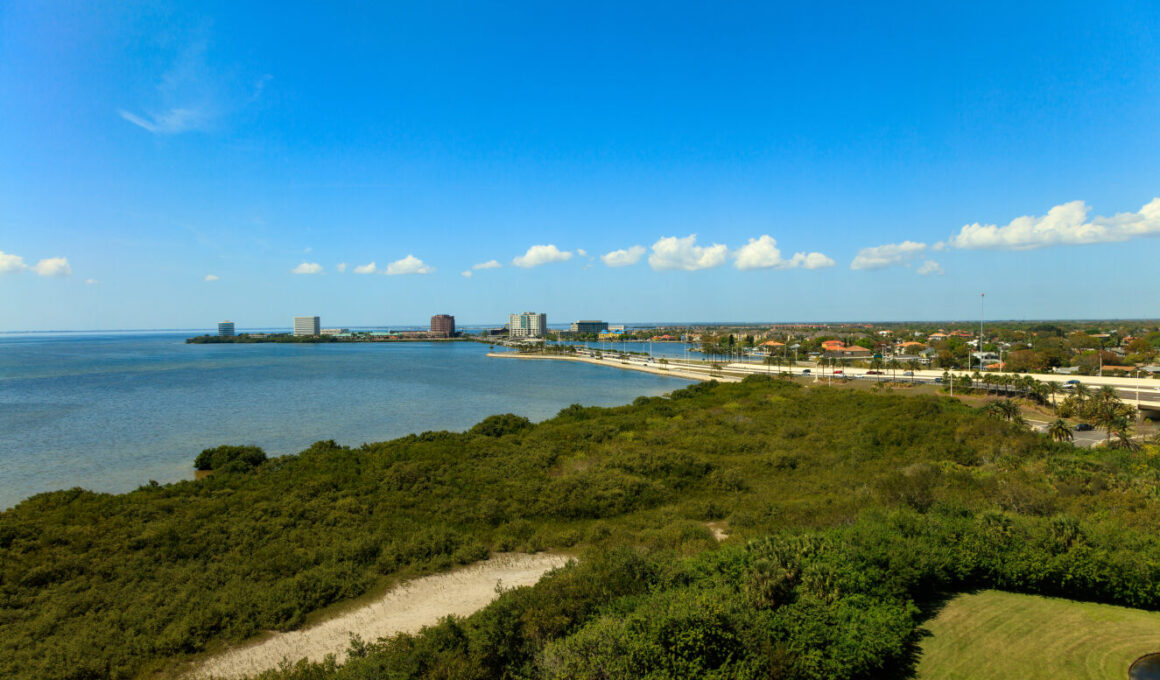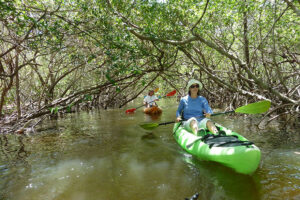Tampa Bay’s natural resources provide more than just beautiful scenery and outstanding recreational opportunities. A healthy Tampa Bay is a primary economic driver for the region, according to a new report from the Tampa Bay Regional Planning Council (TBRPC) and the Tampa Bay Estuary Program (TBEP). Economic output generated by Tampa Bay is more than $32 billion every year and one in 10 jobs – an estimated 207,068 employees – is directly dependent upon the estuary.
“Tampa Bay’s economic value and impact touches the lives of millions of people every single day,” said Woody Brown, Mayor of Largo, Acting Chair of the TBRPC, and Vice Chair of the TBRPC’s Agency on Bay Management. “This report serves as a conclusive reminder of the essential role Tampa Bay plays in shaping our regional identity and reaffirms our shared commitment to safeguarding this invaluable natural resource for generations to come.”
And while some of the economic benefits would accrue just because Tampa Bay exists, most of them are dependent upon a healthy bay, notes Ed Sherwood, TBEP Executive Director. “Economic impacts from tourism, marine construction and the estimated $3.2 billion that homes located near the bay or its primary rivers add to local tax rolls would be lost if Tampa Bay weren’t the beautiful body of water that we all enjoy.”
Other important economic drivers include living resources, such as commercial fishing and farming in upland ecosystems with an annual output of $2.9 billion; the defense sector with an output of $2.2 billion; and marine transportation, including seaports in Tampa, Manatee and St. Petersburg with outputs of $2.9 billion.
Ecosystem services highlighted

Ecosystem services – including flood protection, carbon sequestration and denitrification — are not typically included in economic impact studies but it has become more feasible to identify specific valuations in recent years as communities across the country begin to document their impacts, notes Alana Todd, Senior Environmental Planner at the TBRPC and principal author of the report. “The goal is to demonstrate the true value of these ecosystem services so that people are more aware of the benefits we all derive from the habitats of Tampa Bay. People value – and protect – the things that show clear benefits to them.”
Ecosystems, including mangroves and saltwater wetlands, provide significant flood protection services by stabilizing shorelines, buffering storm surges and waves, and reducing the extent of flood waters. A dollar value of $924.4 million was calculated based on the estimates of ‘avoided damages’ that could occur over a 30-year period from a 100-year flood if the ecosystems did not exist.
“With the Tampa Bay region ranked among the top cities in the world for exposure to damage from flooding and high winds, the flood reduction benefits of wetlands are important enough on their own to help set habitat restoration priorities,” Todd said. “As the region prepares for the destructive effects of climate change, coastal habitats can serve as an important first line of defense for our properties, safety and pocketbooks.”
The annual values for carbon sequestration and denitrification are based on reports from Restore America’s Estuaries and the U.S. EPA that document how much each type of habitat contributes in ecosystem services. For denitrification, those rates were compared to a nationally recognized nutrient offset program, estimated at $97.89 per kilogram of nitrogen removed. Multiplied by acres of Tampa Bay habitats, the report estimates an annual benefit of $714.5 million.
For carbon sequestration, the rates were multiplied by the social cost of carbon (SCC), currently at $87.78 per metric ton for an annual benefit of $52.3 million per year. (At least one local government is taking advantage of its carbon-sequestering habitat at the Lower Green Swamp Preserve where Hillsborough County will earn more than $1 million over the next 10 years and plans to expand its carbon-trading initiative.)

Those numbers are already very impressive,” Sherwood said. “The more we do to restore those critical habitats, like seagrasses, mangroves and saltmarshes, the more ‘free’ benefits our community will receive from their ecosystem services.”
Those values, however, may be declining as habitats across the region are impacted by continued development pressures. Freshwater wetlands are both the largest sector of remaining habitat and the most valuable for carbon sequestration and denitrification services, but they have declined in recent years, so those annual benefits are likely to have dropped too.
Refocusing attention on the bay and its habitats will be even more important going forward, said Barbara Sheen Todd, who served on the Pinellas County Commission for nearly 25 years and now co-chairs the Agency on Bay Management. “All too often, we don’t recognize that Tampa Bay is a critical economic driver for our region. However, water quality — as commonly indicated by acres of seagrasses — has been declining since 2018. This report highlighting Tampa Bay’s economic benefits makes it clear that we must refocus our attention on maintaining and improving the environmental integrity of Tampa Bay. It will take all of us – from elected officials to scientists and homeowners – to turn that tide.”
The full-length and shortened version of the 2023 Economic Valuation of Tampa Bay report is available online at www.tbrpc.org/valueoftampabay.

